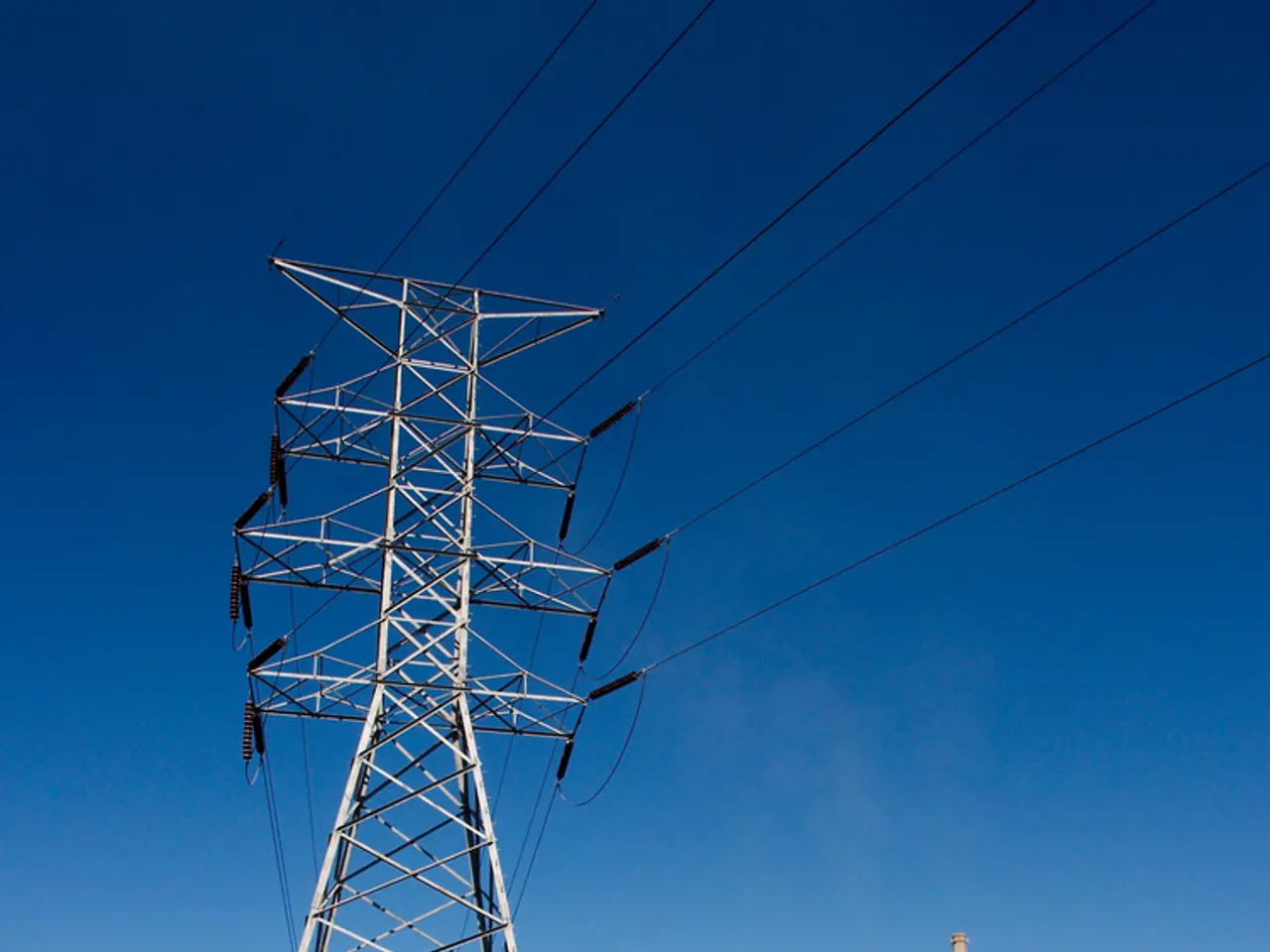Soaring heatwaves reveal vulnerabilities in Europe's electrical infrastructure as air conditioning usage surges
Heatwaves Push Europe's Power Grid to the Limit
Europe is currently grappling with the consequences of an unprecedented heatwave season, with temperatures soaring to record-breaking levels across various countries. This extreme weather is putting Europe's power grid under severe stress, as factual bullet points below reveal.
Finland's wind power production plummeted during the July heatwaves, marking among the weakest on record. Italy experienced blackouts in early July due to the heat stressing its ageing infrastructure, with the strain on the Italian grid partly due to a surge in electricity demand from cooling systems.
Experts warn that heatwaves are putting Europe's power grid under severe stress, as high temperatures increase energy demand as people try to keep cool. This is particularly true for Italy, which is by far the EU's biggest user of air conditioning, accounting for one-third of all electricity consumed by air conditioning across the 27 member states.
However, despite the increasing use of air conditioning in Europe, it still only makes up around 0.6% of household energy use. Yet, the soaring demand from cooling has pushed electricity demand to summer peaks in countries like Spain, Germany, and France.
Renewable energy, particularly solar, can help stabilize strained grids during heatwaves. June 2022 saw the highest monthly EU solar electricity production on record, providing a significant portion of generation in the Netherlands and Greece. In 2025, solar electricity production reached record levels, with solar accounting for 22% of EU electricity generation in July, briefly surpassing nuclear output.
Battery storage capacity has also proven effective in mitigating demand peaks during heatwaves. The EU is accelerating the deployment of battery storage, demand-side flexibility measures, and dynamic pricing to better match supply and demand during extreme events. Infrastructure projects like the Celtic interconnector, supported by EU funding, aim to stabilize markets by enabling power flow between countries, improving reliability, and reducing price volatility during heatwaves.
However, heatwaves also expose significant vulnerabilities. Thermal plants, including nuclear, depend on river or sea water for cooling, which becomes less effective during heatwaves as water temperatures rise. This forced nuclear output reductions, exacerbating supply shortages amid peak demand.
Heatwaves cause overheating of underground cables and transformers, increased risk of equipment failures, and cascading outages. For example, rural grid overload in the UK left 55,000 homes without power due to overheating cables under peak heatwave loads. This highlights a critical need for grid reinforcement and reliable backup systems.
Electricity prices spiked sharply during heatwaves, exposing consumers, especially in vulnerable countries like Romania, to market volatility. Policy discussions focus on protecting consumers via tariff regulation and enhancing energy system resilience.
In summary, Europe's renewable energy sector and power grids are rapidly evolving with more solar, storage, flexibility, and interconnections to cope with heatwaves. However, these extreme events have revealed significant infrastructure and market challenges. Further investments and systemic planning are crucial for ensuring grid stability and affordability amid the climate-driven rise in heat extremes.
[1] European Commission. (2022). European Strategic Outlook on Energy. Retrieved from https://ec.europa.eu/energy/en/topics/strategy/eu-strategic-outlook-energy [2] European Network of Transmission System Operators for Electricity. (2022). European Electricity Grid Initiative. Retrieved from https://www.entsoe.eu/initiatives/eegi [3] International Renewable Energy Agency. (2022). IRENA's Annual Report 2022. Retrieved from https://www.irena.org/publications/2022/Mar/IRENA-Annual-Report-2022 [4] National Grid ESO. (2022). National Grid ESO Annual Report 2021. Retrieved from https://www.nationalgrideso.com/-/media/Files/Reports/Annual-Reports/National-Grid-ESO-Annual-Report-2021.pdf [5] European Atomic Energy Community. (2022). European Atomic Energy Community Annual Report 2021. Retrieved from https://www.euratom.europa.eu/sites/default/files/2022-03/2021_annual_report_en.pdf
- The increasing demand from cooling systems during heatwaves amplifies the need for a shift towards renewable energy, such as solar power, which can help stabilize strained grids and reduce the reliance on fossil fuels in the environmental-science and finance sectors.
- As heatwaves impact the efficiency of traditional thermal plants, particularly nuclear, there is a growing urgency for the industry to invest in renewable energy sources and improve the energy infrastructure's resilience, including implementing battery storage and demand-side flexibility measures.
- The escalating expenses of cooling systems, coupled with electricity prices spiking during heatwaves, have implications for both consumers and governments, necessitating policy discussions on energy affordability, tariff regulation, and sustainability in the industry and environmental-science fields.




